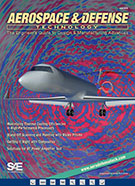Magazine

Aerospace Engineering 2012-11-14
2012-11-14
Gradually going green The number of commercial airplanes globally is expected to double by 2030, but will there be enough fuel to keep them flying? 57 channels and everything's on Radios handle more frequencies as well as visual inputs, forcing developers to employ many design strategies. Surmounting modeling pitfalls A look at software tools that aid in the efficient model-based design of next-generation energy-optimized aircraft. When fuel cells fly Emerging hydrogen and fuel-cell-based technologies are being developed for the future replacement of onboard electrical systems in more-electric or all-electric aircraft.










